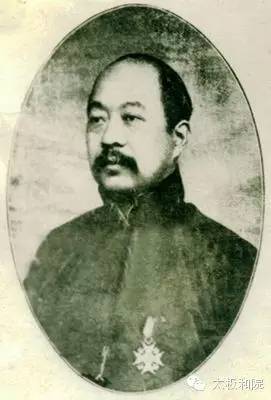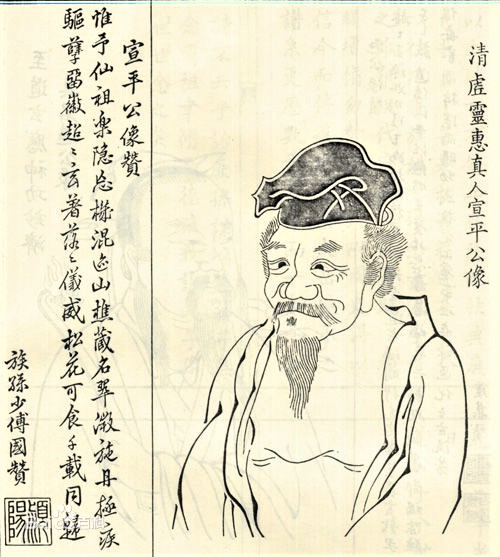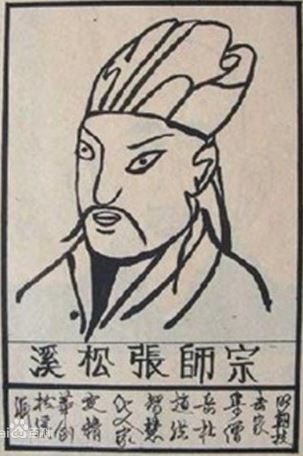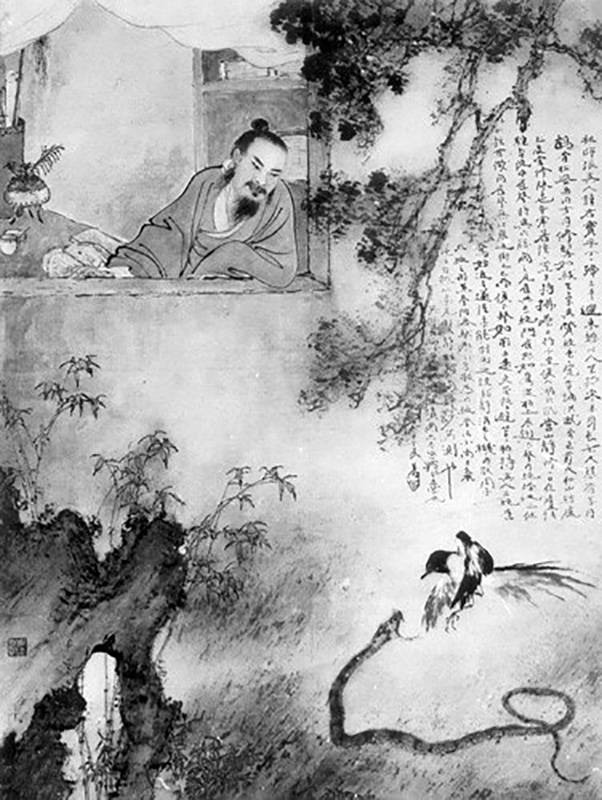Q: How are the Li Family classics related to the so-called Song classics?
A: Song Shuming 宋书 铭, who claimed to be a descendant of Song Yuanqiao 宋遠橋 (1295-1380), was a clerk in Beijing in the government of Yuan Shikai (1859–1916). He was a good friend of the people who started Beijing Physical Education Research Society among whom were several famous martial artists like Yang Chengfu, Wu Jianquan and Sun Lutang and others. Song Shuming owned a copy of the Tai Chi classics which was rare, and furthermore he claimed a lineage of Tai Chi that included several legendary people.
However, the mere fact that these classics were the Wang Zongyue classics leads us right back to the Li Family manuscripts because we now know that Wang Zongyue (ca. 1730-1800) was a student of Li Helin (1716-1808) and a resident of the Tang Village, so Wang Zongyue was not so old and not so mysterious after all.
However, the lineage that Song Shuming was describing involved names of famous Daoists, and this is very natural because the Li Family learned the art from the Thousand Year Temple and this means that Tai Chi has deep roots in Daoism. The lineage described by Song Shuming is completely without any historical evidence or documentation, it is merely a story passed on in Xu Yusheng’s book from 1921 and, as far as we know, never recounted in print previously. (You can read the entire book in English translated by Paul Brennan).

Xu Yusheng 許禹生
Xu Yusheng wrote that the art was taught by Wang Zongyue to Jiang Fa of Henan, who then taught it to Chen Changxing of the Chen family village. This is possible, but why would Chen Changxing learn from Wang Zongyue when his great-great-grandfather Chen Wangting had handed down the art in the family already?
If the monks of the Thousand Year Temple could transmit The Thirteen Movements to the Li Family and Chen Wangting, there is a possibility that they could have learned it from other temples. Or, in fact, they could have taught it to monks in other temples that they associated with. This is why we cannot completely dismiss the story of Zhang Sanfeng. But, in fact, there is also historical material pointing to Li Dao Zi as a founder of the internal arts. Li Dao Zi was praised in the stele texts from the Thousand Year Monastery.
As for the people mentioned in Xu Yusheng’s book, they could have invented a martial art and they could have been great teachers, we just have to conclude that, besides Xu Yusheng’s book, there is very little documentation to be found about this matter. This discussion naturally has some bearing on the authenticity of the Wudang style of Tai Chi which claims this story as their lineage.
Some schools, especially those claiming to have the original Wudang heritage, have tried to tie the many persons mentioned in Xu Yusheng’s book together in a long string to be able to trace Tai Chi as far back in time as possible.
But, in fact, I think Xu Yusheng just meant to recount the different old legends and stories and there is very little documentation for any of these legends. The documentation which actually exist about Zhang Songxi from 1734 does not mention Tai Chi or Thirteen Movements, but praises his boxing abilities and says that his art was transmitted from Zhang Sanfeng in the Song dynasty (A.D. 420-588). However, none of the biographies about Zhang Sanfeng mentions anything about martial arts.
Traces of legends and stories about ancient internal boxers from Xu Yusheng’s book:
- Xu Xuanping 許宣平 a Daoist and poet of the Tang Dynasty – Said to have created a system with 37 postures.
- Song Yuanqiao 宋遠橋 (1295-1380). Said to have learned from Zhang Sanfeng.
- There are several different accounts of how Zhang Sanfeng founded Tai Chi. In Xu Yusheng’s book he received the art in a dream a could fight off a gang of bandits the next day. His art was passed on to Zhang Songxi and Zhang Cuishan.
- Yu Lianzhou, Yu Daiyan, Yin Liheng, and Mo Gusheng were also said to have studied with Zhang Sanfeng, although we don’t know when a single of them lived.
- In Xu Yusheng’s book Li Dao Zi of the Tang dynasty is claimed to be the teacher of the Yu 兪 family: Yu Qinghui, Yu Yicheng, Yu Lianzhou, and Yu Daiyan.
- Cheng style Tai Chi was mentioned to have been created by Cheng Lingxi 程靈洗 from around 500 A.D.
- Yin Liheng was said to have taught a Tai Chi boxing system that was passed on to Hu Jingzi who taught it to Song Zhongshu.
- The book says about Wang Zongyue that at the beginning of the Yuan Dynasty (ca. 1300 A.D.) Wang Zongyue of Xian was famous for his Tai Chi. He was credited for authoring the Tai Chi classics and was said to have taught many people. (We know of course that Wang Zongyue learned Tai Chi around 1750, and he merely signed his own copy of the classics which later caused many to believe that he wrote them).
- Zhang Songxi 張松溪 (ca. 1520-ca.1590) was said to have created an internal boxing system that was passed on to Ye Jinquan who again taught it to Wang Zhengnan 王征南 (1617-1669). Wang was praised by Huang Zongxi and this was recorded in his epitaph written by Huang Zongxi. His son Huang Baijia wrote a lengthy biography of Wang Zhengnan. (Read about it in Douglas Wile’s T’ai Chi’s Ancestors or in Paul Brennan’s translation).
- Finally, Xu Yusheng’s book recount that Jiang Fa studied with Wang Zongyue and that Chen Wangting studied with Jiang Fa. This we know was not true.
There are a few historical records which prove that a few of all these people actually existed. But, apart from the information about Wang Zhengnan, no sensible historian will take any of these information to be of any significance for anything regarding the history of Tai Chi, and seen in the light of the information in the Li Family manuscripts Wang Zhengnan seems to have had no influence on the history of Tai Chi at all.
All in all, we cannot trace the founder of Tai Chi further back than the Thousand Year Monastery, although a single historical record of Li Dao Zi exists pointing further back in history.

Xu Xuanping 許宣平

Xu Xuanping

Zhang Songxi

Zhang Songxi

The biography of Wang Zhengnan

Zhang Sanfeng watching the fight between the bird and the snake on the Wudang Mountain.